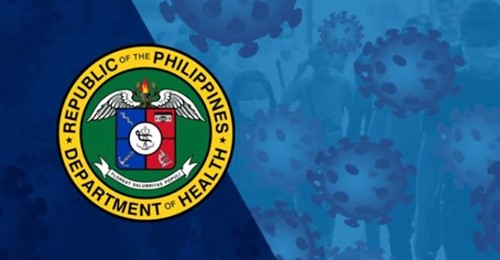MANILA, Philippines — The Department of Health (DOH) on Saturday said it had detected the first P.1 variant of the coronavirus, also known as the variant of concern (VOC) from Brazil.
It was found in a Filipino worker, who is from Western Visayas, who had returned from Brazil, the DOH said. It said it was still looking for more information regarding his case.
There are currently three VOCs globally, according to the World Health Organization (WHO). These are the B.1.1.7 variant first detected in the United Kingdom (the UK variant), the B.1.351 variant initially detected in South Africa (the SA variant) and the P.1 variant. Highly transmissible
All three VOCs are now in the Philippines.
These variants have been associated with higher transmissibility and initial studies also show that the South African variant may be resistant to some vaccines. Scientists found that the virus with the P.1 variant has a spike protein that makes it bind quicker to human cells, making it more infectious.
The DOH also confirmed that continued whole genome sequencing has led to the detection of 59 more cases of the UK variant and 32 cases of the SA variant. This brings the country’s total to 177 UK variant cases and 90 SA variant cases.
The DOH also confirmed that it was directed to designate “P.3” to a variant of SARS-CoV-2, the virus that causes the severe respiratory disease, which was initially detected in the Philippines. This variant contains two mutations of concern, the DOH said.
However, the health department stressed that it was not yet declaring P.3 a variant of concern. There are already 98 cases of the P.3 variant in the country, the DOH said.
During Saturday’s Laging Handa public briefing, Dr. Anna Ong-Lim of the DOH technical advisory group said that the Philippine Genome Center reported that it had detected 85 cases with a unique set of mutations to the global reporting system Phylogenetic Assignment of Named Global Outbreak Lineages (Pangolin).
The DOH asked Pangolin whether this was “unique to the Philippines.” “They’ve come back to us and told us that this is a new variant,” she said.
The P.3 variant, which has also been detected by health authorities in Japan from a 60-year-old man who had arrived from the Philippines, contains two mutations of concern designated as N501Y and E484K.These two mutations are also present in the B.1.1.7, B.1.351 and P.1 variants.
The P.3 variant first detected in the Philippines could not be immediately be classified as a VOC, according to Dr. Alethea de Guzman, director of the DOH’s epidemiology bureau.
‘Unique set of mutations’
“It is a unique set of mutations that constitute one variant. The P.3 variant has the N501Y, the E484K and other mutations,” she said in a Viber message.
De Guzman said the WHO earlier explained that a variant was only considered a VOC after an assessment that it had fulfilled a specific criteria. Specifically, the variant should show an increase in transmissibility or detrimental change in COVID-19 epidemiology; an increased virulence or change in clinical disease presentation; or a decrease in effectiveness of public health and social measures or available diagnostics, vaccines or therapeutics.
A variant can also be classified as a VOC by the WHO if it is assessed as one by its SARS-CoV-2 Virus Evolution Working Group.“P.3 is still being studied to find evidence if it will fulfill the criteria,” De Guzman said.
The DOH said that “current available data [on P.3] are insufficient to conclude whether the variant will have significant public health implications.”
The Philippines on Saturday recorded the most infectious day of 2021 when it recorded 5,000 new cases of COVID-19 infections. This is the most in a single day in almost seven months, or since Aug. 26, 2020, when the DOH reported 5,277 new cases.
The highest daily figure the country has recorded so far was 6,958 on Aug. 10, 2020. It was also around August last year when health-care workers called for a “timeout.”
Latest case count
On Thursday, Metro Manila mayors imposed a regionwide curfew from 10 p.m. to 5 a.m. for the next two weeks in an effort to contain infections in the capital.
Saturday’s new infections pushed the country’s total case count to 626,622.
According to the DOH, 281 patients have recovered, raising the number of survivors to 547,166. However, 72 have died, bringing the death toll to 12,766.
The recoveries and deaths left 56,679 active cases. Of this number, 92.3 percent are mild cases, 4.3 percent asymptomatic, 1.4 percent critical, 14 percent severe and 0.66 moderate.
The DOH said seven laboratories were unable to submit their data on time.
Former Health Secretary Janette Garin, who represents Iloilo’s first district in the House of Representatives, said the presence of the Brazil variant was a “strong reminder to get our act together.”
She suggested the use of the allocated second dose of available COVID-19 vaccines as the first dose for new recipients to protect more Filipinos against the emerging and more contagious variants of the coronavirus.
“Each day of protection is a big step toward being ahead of the virus,” she said. —WITH A REPORT FROM JULIE M. AURELIO
